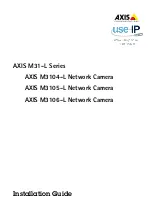
C H A P T E R
7-1
Cisco 1800 Series Integrated Services Routers (Fixed) Software Configuration Guide
OL-6426-02
7
Configuring VPNs Using an IPSec Tunnel and
Generic Routing Encapsulation
The Cisco 1800 series integrated services fixed-configuration routers support the creation of virtual
private networks (VPNs).
Cisco routers and other broadband devices provide high-performance connections to the Internet, but
many applications also require the security of VPN connections which perform a high level of
authentication and which encrypt the data between two particular endpoints.
Two types of VPNs are supported—site-to-site and remote access. Site-to-site VPNs are used to connect
branch offices to corporate offices, for example. Remote access VPNs are used by remote clients to log
in to a corporate network.
The example in this chapter illustrates the configuration of a site-to-site VPN that uses IPSec and the
generic routing encapsulation (GRE) protocol to secure the connection between the branch office and
the corporate network.
Figure 7-1
shows a typical deployment scenario.
Figure 7-1
Site-to-Site VPN Using an IPSec Tunnel and GRE
1
Branch office containing multiple LANs and VLANs
2
Fast Ethernet LAN interface—With address 192.165.0.0/16 (also the inside interface for NAT)
3
VPN client—Cisco 1800 series integrated services router
4
Fast Ethernet or ATM interface—With address 200.1.1.1 (also the outside interface for NAT)
5
LAN interface—Connects to the Internet; with outside interface address of 210.110.101.1
6
VPN client—Another router, which controls access to the corporate network
121783
Internet
3
1
2
4
5
7
6
8
9
Summary of Contents for 1801
Page 21: ...P A R T 1 Getting Started ...
Page 22: ......
Page 39: ...P A R T 2 Configuring Your Router for Ethernet and DSL Access ...
Page 40: ......
Page 119: ...P A R T 3 Configuring Additional Features and Troubleshooting ...
Page 120: ......
Page 157: ...P A R T 4 Reference Information ...
Page 158: ......
















































